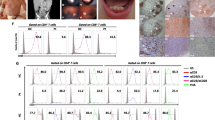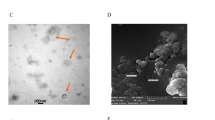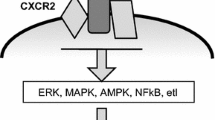Abstract
Kawasaki disease (KD) is an acute febrile illness in childhood characterized by the formation of aneurysms in coronary arteries. It is believed that KD is caused by infectious agents because of its epidemic waves and high incidence of familial occurrence. Because an increase in the levels and dysfunction of B cells in peripheral blood was reported in KD, we investigated the expression of cluster of differentiation 180 (CD180), a toll-like receptor homologue, in the B cells of children with KD, and in those with bacterial or viral infections. The percentages of CD180 positive B cells were significantly higher in children with KD or viral infections than in those with bacterial infections or in healthy controls. When the expression levels of CD180 were compared by using the mean fluorescent intensity ratio of patients to healthy controls, the level of CD180 expression was also significantly up-regulated in children with KD or viral infections. To clarify the effect of viral infection on the expression of CD180, B cells were stimulated with poly inosinic-cytidyric acid [poly(IC)], a synthetic double-stranded RNA. Poly(IC) clearly enhanced CD180 expression in B cells in vitro, both at the protein and messenger RNA levels. These results suggest that similar mechanisms may be involved in the up-regulation of B cell CD180 expression in patients with either KD or viral infections.







Similar content being viewed by others
Abbreviations
- KD:
-
Kawasaki disease
- TLR:
-
Toll-like receptor
- LPS:
-
Lipopolysaccharide
- CAL:
-
Coronary artery lesion
- PBMC:
-
Peripheral blood mononuclear cell
- Poly(IC):
-
Poly inosinic-cytidyric acid
- PCR:
-
Polymerase chain reaction
- MFI:
-
Mean fluorescent intensity
References
Cuttica RJ (1997) Vasculitis, Kawasaki disease, and pseudovasculitis. Curr Opin Rheumatol 9:448–457
Kato H, Sugiyama T, Akagi T, Sato N, Hashino K, Maeno Y, Kazue T, Eto G, Yamakawa R (1996) Long-term consequences of Kawasaki disease. A 10- to 21-year follow-up study of 594 patients. Circulation 94:1379–1385
Suzuki A, Kamiya T, Arakaki, Kinoshita Y, Kimura K (1994) Fate of coronary arterial aneurysms in Kawasaki disease. Am J Cardiol 74:822–824
Akiyama T, Yashiro K (1993) Probable role of Streptococcus pyogenes in Kawasaki disease. Eur J Pediatr 152:82–92
Abe J, Onimaru M, Matsumoto S, Noma S, Baba K, Ito Y, Kohsaka T, Takeda T (1997) Clinical role for a superantigen in Yersinia pseudotuberculosis infection. J Clin Invest 99:1823–1830
Marchette NJ, Melish ME, Hicks R, Kihara S, Sam E, Ching D (1990) Epstein–Barr virus and other herpesvirus infections in Kawasaki syndrome. J Infect Dis 161:680–684
Yoshioka T, Matsutani T, Iwagami S, Toyosaki-Maeda T, Yutsudo T, Tsuruta Y, Suzuki H, Uemura S, Takeuchi T, Koike M, Suzuki R (1999) Polyclonal expansion of TCRBV2- and TCRBV6-bearing T cells in patients with Kawasaki disease. Immunology 96:465–472
Takeshita S, Nakatani K, Kawase H, Seki S, Yamamoto M, Sekine I, Yoshida S (1999) The role of bacterial lipopolysaccharide-bound neutrophils in pathogenesis of Kawasaki disease. J Infect Dis 179:508–512
Brown TJ, Crawford SE, Cornwall ML, Garcia F, Shulman ST, Rowley AH (2001) CD8 T lymphocytes and macrophages infiltrate coronary artery aneurysms in acute Kawasaki disease. J Infect Dis 184:940–943
Miyake K, Yamashita Y, Hitoshi Y, Takatsu K, Kimoto M (1994) Murine B cell proliferation and protection from apoptosis with an antibody against a 105-kd molecule: unresponsiveness of X-linked immunodeficient B cells. J Exp Med 180:1217–1224
Miyake K, Yamashita Y, Ogata H, Sudo T, Kimoto M (1995) RP105, a novel B cell surface molecule implicated in B cell activation, is a member of the leucine-rich repeat protein family. J Immunol 154:3333–3340
Yamashita Y, Miyake K, Miura Y, Kaneko Y, Yagita H, Suda T, Nagata S, Nomura J, Sakaguchi N, Kimoto M (1996) Activation mediated by RP105 but not CD40 makes normal B cells susceptible to anti-IgM-induced apoptosis: a role for Fc receptor colligation. J Exp Med 184:113–120
Miyake K, Shimazu R, Kondo J, Niki T, Akashi S, Ogata H, Yamashita Y, Miura Y, Kimoto M (1998) Mouse MD-1, a molecule that is physically associated with RP105 and positively regulates its expression. J Immunol 161:1348–1353
Ogata H, Su I, Miyake K, Nagai Y, Akashi S, Mecklenbrauker I, Rajewsky K, Kimoto M, Tarakhovsky A (2000) The toll-like receptor protein RP105 regulates lipopolysaccharide signaling in B cells. J Exp Med 192:23–29
Okada Y, Shinohara M, Kobayashi T, Inoue Y, Tomomasa T, Kobayashi T, Morikawa A (2003) Effect of corticosteroids in addition to intravenous gamma globulin therapy on serum cytokine levels in the acute phase of Kawasaki disease in children. J Pediatr 143:363–367
Divanovic S, Trompette A, Atabani SF, Madan R, Golenbock DT, Visintin A, Finberg RW, Tarakhovsky A, Vogel SN, Belkaid Y, Kurt-Jones EA, Karp CL (2005) Negative regulation of Toll-like receptor 4 signaling by the Toll-like receptor homolog RP105. Nat Immunol 6:571–578
Rowley AH, Baker SC, Shulman S, Garcia FL, Guzman-Cottrill JA, Chou P, Terai M, Kawasaki T, Kalelkar MB, Crawford SE (2004) Detection of antigen in bronchial epithelium and macrophages in acute Kawasaki disease by use of synthetic antibody. J Infect Dis 190:856–865
Stunz LL, Busch LK, Munroe ME, Sigmund CD, Tygrett LT, Waldschmidt TJ, Bishop GA (2004) Expression of the cytoplasmic tail of LMP1 in mice induces hyperactivation of B lymphocytes and disordered lymphoid architecture. Immunity 21:255–266
Hunziker L, Recher M, Macpherson AJ, Ciurea A, Freigang S, Hengartner H, Zinkernagel RM (2003) Hypergammaglobulinemia and autoantibody induction mechanisms in viral infection. Nat Immunol 4:343–349
Furukawa F, Ohshio G, Hamashima Y (1986) Possible polyclonal B cell activation in mucocutaneous lymphonode syndrome. Eur J Pediatr 145:104–108
Koarada S, Tada Y, Ushiyama O, Morito F, Suzuki N, Ohta A, Miyake K, Kimoto M, Nagasawa K (1999) B cells lacking RP105, a novel B cell antigen, in systemic lupus erythematosus. Arthritis Rheum 42:2593–2600
Acknowledgement
This study was supported in part by a grant from the Japanese Kawasaki Disease Research Center.
Author information
Authors and Affiliations
Corresponding author
Rights and permissions
About this article
Cite this article
Imayoshi, M., Yamamoto, S., Watanabe, M. et al. Expression of CD180, a toll-like receptor homologue, is up-regulated in children with Kawasaki disease. J Mol Med 84, 168–174 (2006). https://doi.org/10.1007/s00109-005-0010-8
Received:
Accepted:
Published:
Issue Date:
DOI: https://doi.org/10.1007/s00109-005-0010-8




